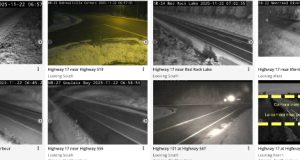With camping season upon us, campers should remember that the one thing that should ALWAYS be left behind when packing is firewood.
Although it may seem harmless to bring a few logs for the campfire, this simple act can be extremely detrimental to the forest around you.
Entomologists with Natural Resources Canada’s Canadian Forest Service (CFS) caution that the most common way for invasive insects to spread is through people moving infested materials such as firewood, logs, branches, or other wood. Insects often hide or lay their tiny eggs underneath the bark, making it virtually impossible to spot pests on wood with the naked, untrained eye.
Once a pest establishes in a new area, it can be difficult, if not impossible, to eradicate. Forest pests cause significant damage to native trees and plants that lack defenses against these invaders. They can slow growth or even kill trees, having a considerable impact forest health as well as recreation and tourism industries.
The emerald ash borer is an example of how fast invasive pests can spread and be harmful their environment when people transport them by bringing wood from one place to another. The shiny green insect from Asia, which has already killed millions of ash trees in Canada, doesn’t move very far on its own – less than 2 kilometres per year on average. A truckload of firewood infested with emerald ash borer, on the other hand, can be moved hundreds of kilometres in a single day. With the help of humans, emerald ash borer has spread to 35 US states and from Manitoba to Nova Scotia, since it was first detected in the Detroit-Windsor area in 2002. Emerald ash borer is extremely destructive and kills up to 99% of ash trees within 8-10 years of its arrival to an area.
Reducing the establishment, spread and damage of undesirable insects and diseases is part of the forest pest research led by CFS researchers. Together, they work on developing a range of biological and forest management tools and techniques, such as methods to detect and control insects and diseases.
In Ontario, the transportation of firewood could mean not only the spread of emerald ash borer, but also the spread of several other invasive pests such as the Gypsy Moth and the Hemlock Woolly Adelgid.
SOURCE – Natural Resources Canada
Correction: On May 25th the sentence “With the help of humans, emerald ash borer has spread to 35 US states and from Ontario to Nova Scotia, since it was first detected in the Detroit-Windsor area in 2002. Emerald ash borer is extremely destructive and kills up to 99% of ash trees within 8-10 years of its arrival to an area.” was corrected to read “With the help of humans, emerald ash borer has spread to 35 US states and from Manitoba to Nova Scotia, since it was first detected in the Detroit-Windsor area in 2002. Emerald ash borer is extremely destructive and kills up to 99% of ash trees within 8-10 years of its arrival to an area.”
- 8th Annual Lori Johnson Memorial Women’s Hockey Tournament - November 21, 2025
- Stick Curling Clinic - November 19, 2025
- Men’s Curling Standings – November 18 - November 18, 2025
 Wawa-news.com You can't hear the 'big picture'!
Wawa-news.com You can't hear the 'big picture'!
